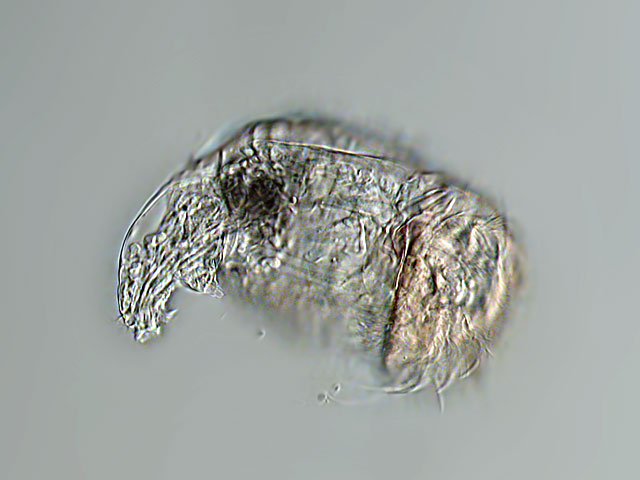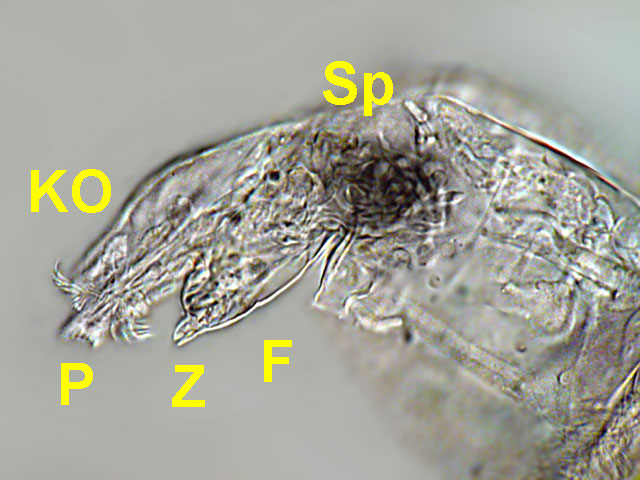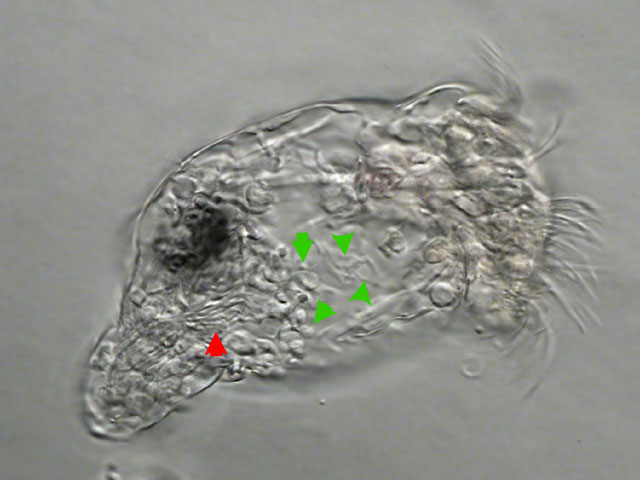| Brachionus calyciflorus, male; in the group of monogonont rotifers the males of many species are not known. In the genus Brachionus however the males are relative common. They are much smaler than the females (dwarf males) and some organs like the digestive organs are reduced or absent. |
 |
| Brachionus calyciflorus, male; the copulation organ (KO) is conspicuous and surpasses the foot in size (see image below). |
 |
| Brachionus calyciflorus, male; crop of the above image. KO: ciliated copulation organ out of which the penis (P) is everted. F: foot with toes (T). Sp: sperm cells in the testis. |
 |
| Brachionus calyciflorus, male; the green arrowheads point to the heads of the sperm cells. The red arrowhead points to some needle-shaped bodies, the so-called "atypical sperm cells". |
 |
| Brachionus calyciflorus: sperms surrounding a mictic (haploid) egg. Observation with phase contrast shows a small mictic (haploid) egg surrounded by several sperms. After some generations of asexual parthenogenic (amictic) reproduction via amictic diploid eggs a so-called mictic stimulus (which may be the result of changing environmental conditions) causes a generation of mictic females. These females produce haploid eggs which develop into haploid males if not fertilized. These males produce sperms which fertilize other mictic haploid eggs, as shown in the above image. The fertilized egg is a so-called resting egg, which has a durable shell which may survive bad environmental conditions like aridification or low temperatures. |
|
| Location: Gevelsberg, Grünes Klassenzimmer (Teich) |
| Habitat: Plankton |
| Date: 14.4.2009 |
|
|